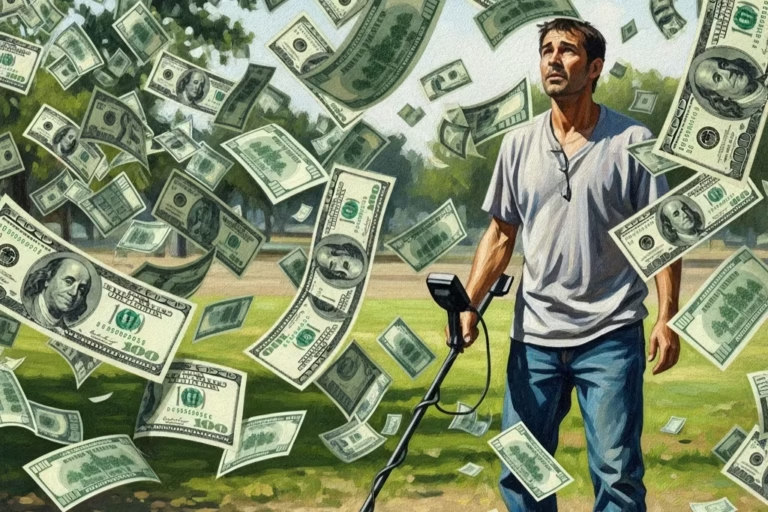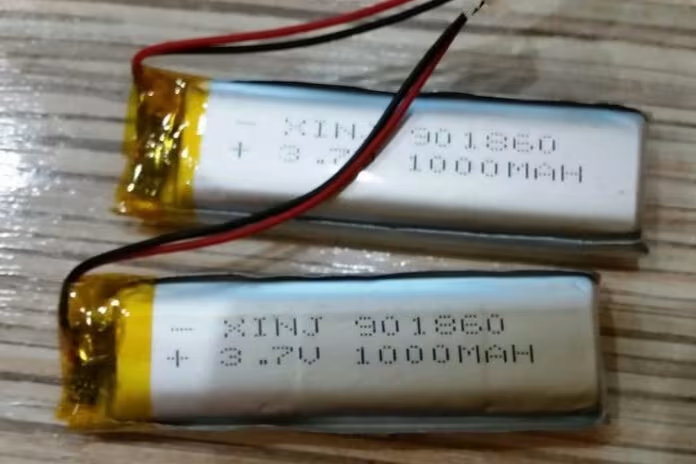I still remember the day I found my first silver dollar—a tarnished 1922 Peace Dollar buried four inches deep at our local park. What began as a weekend curiosity with a borrowed metal detector has become my most rewarding side hustle fifteen years later.
While not everyone stumbles upon a motherlode like that Oregon school custodian (who literally hit a 119-ounce gold pocket on his first outing—talk about beginner’s luck!), the path from casual hobbyist to income-generating detectorist is more accessible than most people realize. Let me share what I’ve learned along the way.
The Treasure Hunter’s Menu: Pick Your Specialty
Most of us start by swinging our detectors wherever we can get permission, but real profitability comes with specialization. I started with coin hunting but eventually found my sweet spot in jewelry recovery.
Gold prospecting offers potentially life-changing finds if you’re willing to invest in specialized equipment and research historically productive areas. Last summer, I watched a seasoned detectorist pull three nuggets worth over $900 from a dried creek bed in California gold country. She’d spent months researching old mining claims before even turning on her detector.
Cache hunting—searching for deliberately buried valuables—requires deep-diving into historical research and often deeper-reaching equipment. My buddy Mike focuses exclusively on old homesteads, using property records and newspaper archives to identify promising sites. He once unearthed a mason jar containing 1890s silver certificates under what used to be a bedroom floor.
For beginners, I usually recommend jewelry hunting in accessible public spaces. On busy summer weekends, I sweep our local beaches at dawn, often finding rings, watches, and chains lost the day before. The rush of returning a wedding ring to its panicked owner—and the occasional rewards they offer—makes this my personal favorite.
Coin hunting might seem less glamorous, but volume creates steady returns. My neighbor Dave specializes in high-traffic urban parks and averages $30-50 in modern coins weekly, plus the occasional silver piece or wheat penny for his collection.
Relic hunting attracts those with a passion for history. Though I personally don’t have the patience for it, my detecting club includes several members who’ve built impressive relationships with regional museums and Civil War collectors, turning rusty artifacts into respectable side income.
Don’t overlook underwater detecting if you’re already comfortable in water. I’ve only dabbled here—Florida beaches after hurricane season—but the competition is minimal and the findings can be spectacular when other detectorists can’t reach them.
From Finds to Funds: Making Real Money

Most detectorists start by simply selling their finds. I maintain relationships with three buyers: a local coin shop, a jewelry broker who takes my gold and silver pieces, and an antique dealer who handles anything with historical value. For truly exceptional items, I’ve used specialty auction houses where experts can help identify the right collectors.
But selling finds is just the beginning. After returning a businessman’s platinum wedding band at a resort beach four years ago, I started offering formal recovery services. My “Lost & Found” business now brings in more income than the items I keep and sell. I charge a modest flat fee plus a percentage-based success bonus—people are amazingly generous when you’ve rescued their grandmother’s irreplaceable heirloom.
Teaching opportunities appeared organically as I gained experience. Last summer I led four “Introduction to Metal Detecting” workshops through our city’s recreation program, charging $75 per person for three-hour sessions. The participants ranged from curious retirees to parents looking for family activities.
I’m not mechanically inclined, but Tom, one of my friends who got me into this hobby, supplements his retirement by repairing detectors in his garage workshop. He’s the go-to guy when anyone in three counties has equipment problems, charging fair rates while building tremendous goodwill in the detecting community.
What Separates the Casual Hobbyist from the Money-Maker
Equipment matters more than beginners realize. I started with a $200 detector and found plenty to keep me interested, but my recovery rate tripled after upgrading to a $650 mid-range model with better discrimination and ground balancing. For specialized hunting like gold prospecting or saltwater beach hunting, the right detector makes the difference between frustration and success.
Research separates amateurs from pros. Before I sweep a new area, I’ve usually spent hours with historical maps, property records, newspaper archives, and aerial photos. Last year I identified a forgotten 1920s picnic grounds that had been overlooked by other detectorists—it yielded 27 silver coins in a single weekend.
Skill development compounds over time. I cringe remembering how many targets I misidentified or damaged while recovering in my early days. Proper swing technique, accurate target identification, and clean recovery methods take practice but dramatically improve results. I still learn new tricks from fellow detectorists decades into this hobby.
The legal side isn’t exciting, but it’s crucial. I keep a permission notebook with signed forms for every private property I search, and I’ve memorized regulations for all public lands in my region. Nothing kills profitability faster than fines or confiscations. One club member ignored permit requirements on state land and lost both his finds and his $1,200 detector to rangers.
Networking opened doors I never expected. After returning a historically significant medal to a local family, I was invited to search several old properties previously off-limits to detectorists. These connections have led to some of my most profitable hunts and recovery jobs.
Real Talk About the Money

Let’s be honest—few detectorists make a living solely from this pursuit, at least not immediately. My first year, I spent about $600 on equipment and probably found $200 worth of items. Five years in, I was breaking even annually. Now, between finds, recovery services, and content creation, metal detecting contributes about 25% of my annual income—not enough to quit my day job, but a meaningful supplement that funds vacations and home improvements.
The non-monetary benefits probably matter more to most of us anyway. At 58, I’m in better shape than friends who spend weekends on the couch. I’ve developed a knowledge of local history that amazes longtime residents. The detecting community has brought friendships that extend far beyond our shared hobby.
And there’s nothing—absolutely nothing—that compares to the moment when your detector signals, you carefully remove the soil, and something precious that’s been lost to the world for decades or centuries reveals itself in your hand. That feeling alone keeps me coming back, regardless of market value.
Starting Your Treasure-Hunting Business
If you’re intrigued enough to try this yourself, here’s my practical advice after helping dozens of newcomers get started:
Begin with a detector in the $250-400 range rather than the cheapest model you can find. Frustration kills enthusiasm faster than anything, and entry-level machines provide enough capability to keep you motivated. The Garrett Ace series or Minelab Vanquish are solid starting points before moving to more specialized equipment.
Develop basic skills in forgiving environments like public parks and beaches where targets are plentiful. My first month, I hunted exclusively in a schoolyard playground, recovering modern coins until the machine’s signals became second nature.
Connect with experienced detectorists through local clubs or online forums. Most are surprisingly generous with knowledge if you’re respectful and eager to learn. My mentor Frank spent countless hours showing me how to interpret signals and recover items without damage—knowledge no YouTube video could adequately convey.
Start your monetization journey by selling common finds while building the expertise that enables higher-value services. I sold coins and scrap jewelry for two years before offering recovery services and four years before creating instructional content.
Whether you’re hunting Civil War relics in Virginia, Spanish colonial artifacts in Florida, or last weekend’s lost jewelry at your local swimming hole, approaching metal detecting as both passion and potential business creates a uniquely rewarding pursuit. Just be prepared for curious onlookers asking if you’ve found anything good yet—it comes with the territory!

My name is Paul and I am the founder of Detector For Metal, a dedicated resource for metal detecting enthusiasts seeking to uncover historical treasures and connect with the past using the latest technology. As a stay-at-home dad and family man, I’ve found metal detecting to be the perfect hobby that combines family adventure with historical learnings for the whole family.
As a father, I’m deeply committed to passing on this hobby to the next generation of detectorists, starting with my own children. I share advice on everything from metal detecting with kids to exploring the top 10 metal detecting sites you never thought about. My methodical approach to the hobby goes beyond the thrill of discovery—it’s about creating family traditions while preserving history and sharing the stories of those who came before us.


